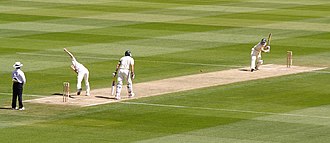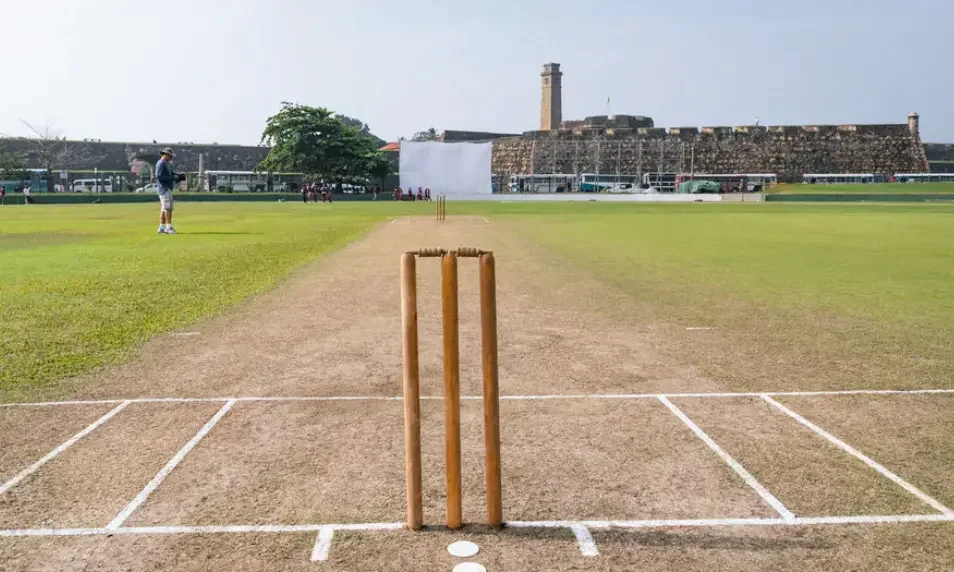Cricket is a team sport played between two teams of eleven players each. The objective is straightforward: score more runs than your opponent. Think of it as a strategic battle where one team tries to score points (runs) while the other team tries to prevent them from doing so.
A cricket field is typically oval-shaped with a rectangular 22-yard cricket pitch at the center. Key elements include:


Source: wiki

Source: wiki
Each team alternates between batting and bowling/fielding:
Cricket uses an innings system where each team gets a turn to bat:
Running between wickets: After hitting the ball, batters run to the opposite end of the pitch. Each successful run between wickets equals one run.
Boundaries:
Extras (penalty runs awarded to the batting team):
An over consists of six legal deliveries from one bowler to one batter. After each over:
Fast bowling: High-speed deliveries (80+ mph) focusing on pace and bounce Spin bowling: Slower deliveries with rotation causing the ball to turn off the pitch Medium pace: Moderate speed with emphasis on accuracy and movement
Bowled: Ball hits the stumps directly, dislodging the bails Caught: Fielder catches the ball before it touches the ground after being hit by the bat LBW (Leg Before Wicket): Ball hits batter’s leg in line with the stumps (complex rule with specific conditions) Run out: Fielders break the stumps while batters are running Stumped: Wicket-keeper breaks stumps while batter is out of their crease
Hit wicket: Batter accidentally breaks their own stumps Handled the ball: Batter intentionally touches ball with hand Obstructing the field: Batter deliberately interferes with fielding Timed out: New batter takes too long to arrive at the crease
Wicket-keeper: Stands behind stumps (like a catcher in baseball) Slips: Close catchers behind the batter Close fielders: Near the batter for catches Boundary fielders: Positioned to stop boundaries Strategic positions: Placed based on bowling type and batter weaknesses
Batting strategy: Balance attack and defense, rotate strike, target weak bowlers Bowling strategy: Vary pace and line, create pressure, set attacking fields Fielding strategy: Support bowlers, prevent runs, create run-out opportunities
Century: Batter scoring 100 runs in one innings
Hat-trick: Bowler taking three wickets in consecutive deliveries
Duck: Batter dismissed without scoring any runs
Maiden over: Over where no runs are scored
Powerplay: Restricted fielding periods in limited-overs cricket
Death overs: Final overs of an innings (usually intense)
Strike rate: Runs scored per 100 balls faced
Economy rate: Runs conceded per over by bowlers





